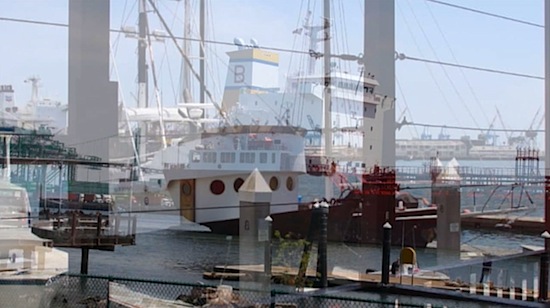San Pedro’s Ports O’Call is a place for people all ages. It is unique. It may not last long.
A few months ago the Los Angeles Board of Harbor Commissioners unanimously approved an “Exclusive Negotiating Agreement” with a group of developers for the redevelopment of a 30-acre waterfront which includes Ports O’Call. Hopefully, its replacement will be able to combine a not-nostalgic / not “pseudo-something” sustainable design, and at the same time create an adequate “space for people,” without triggering gentrification. Not easy, but possible.
“As is,” Ports O’Call is not architecture of any design value. Built in 1963 as a pseudo New England village, it is narrowly sandwiched between the waterfront and an ocean of asphalt. Yet, although it is linked to Los Angeles’ core by a narrow umbilical cord, it attracts a significant segment of the city’s Latino population. Families and friends come in large groups, ranging in age from a few months to the late 80’s. Round tables for eight or long ones for many people invite socialization.
The place touches all senses: sound, smell, taste…The views are dynamic. With a background defined by the suspended Vincent Thomas Bridge, thousands of piled containers and protruding cranes, ships pass by, seagulls overfly and the water waves splash against the docks
It is a place to enjoy and learn from. Architects, designers, planners and decision-makers in politics and investment financing can absorb a few things from Ports O’Call on how a right combination of setting and affordable commerce can touch people’s emotional needs. Good design could make the difference between “nice” and “great!”

